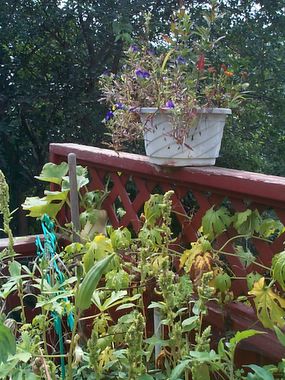Time was when a full-time job at minimum wage was actually enough to get by in life. Not anymore, especially with gasoline prices trying to leave the stratosphere. Everyone except the truly wealthy feel the pinch, especially when you factor that for every cent per gallon gasoline increases, delivery costs on everything we purchase goes up several times over. Every product costs more, which causes services to cost more, which in turn causes other services to cost more. The net result is that there's no bloody way anyone can live on minimum wage, possibly not even with two full-time jobs.
When you try balancing your monthly budget to figure out where you can cut back, you realize your choices sometimes boil down to eating or not eating. My personal philosophy is that even if I can't do anything else to help you in your time of need, I will feed you, somehow, if you are hungry. I live by this. But since you probably live hundreds or thousands of miles from me, and I've disable my doorbell, what options are left to you? The answer is simpler than many people realize, but we have become a culture that lets media tell us how to think, what opinions to have. We forget that we are capable, thinking creatures that are savvy enough to solve our own problems.
The answer is simple. In North America, in every continent on Earth, forever back into history, we grew our own food. You don't have to have a mega-garden or put a lot of effort into it. Just a little bit of effort and a bit of knowledge is all you need.
If you live somewhere that you have access to a balcony or a backyard, get yourself some large wooden barrels from a garden shop, vegetable seeds (tomatoes, okra, zuchinni, squash, bell peppers, cucumbers, onions, potatoes, basil and various other herbs), some potting soil, and organic fertilizer. Get them to deliver if you don't have a vehicle. Save eggshells, teabags and vegetable cuttings, that you would normally throw away, as additional fertilizer. Grow fresh herbs in small pots indoors on the windowsill year-round. There's still time this year to grown a batch or two out of certain vegetables. Prepare any excess and freeze, pickle, bottle, the rest. You can pluck green tomatoes early and put them in a paper bag to ripen on their own over the winter. It's easy to find instructions for starting small gardens on the Internet or in garden mags.
The money you save will amaze you. What's more, if you stick that money into a safe money-market fund, the interest accumulated will make you wonder why you didn't grow your own food before.
For those of you that either live in apartments without balconies or somewhere that you do not have permission to use the backyard, you can grow herbs indoors. To grow veggies, join a local "grow cooperative", where members share a patch of land and divide it into small plots that they rent out or even co-own. If you can't find one, get a bunch of friends together with a small amount of money each, and buy or rent a patch. (Make sure you have proper documentation of co-ownership.)
With a little bit of planning and effort, you'll have your own green thumb in no time. What's more, if you have never tasted food made with vegetables and herbs picked right from the garden, you have never tasted heaven. The taste is so incredible that you'll swear off bland, lifeless boiled veggies forever.
(c) Copyright 2005-present, Raj Kumar Dash, http://cookingforone-or-two.blogspot.com













